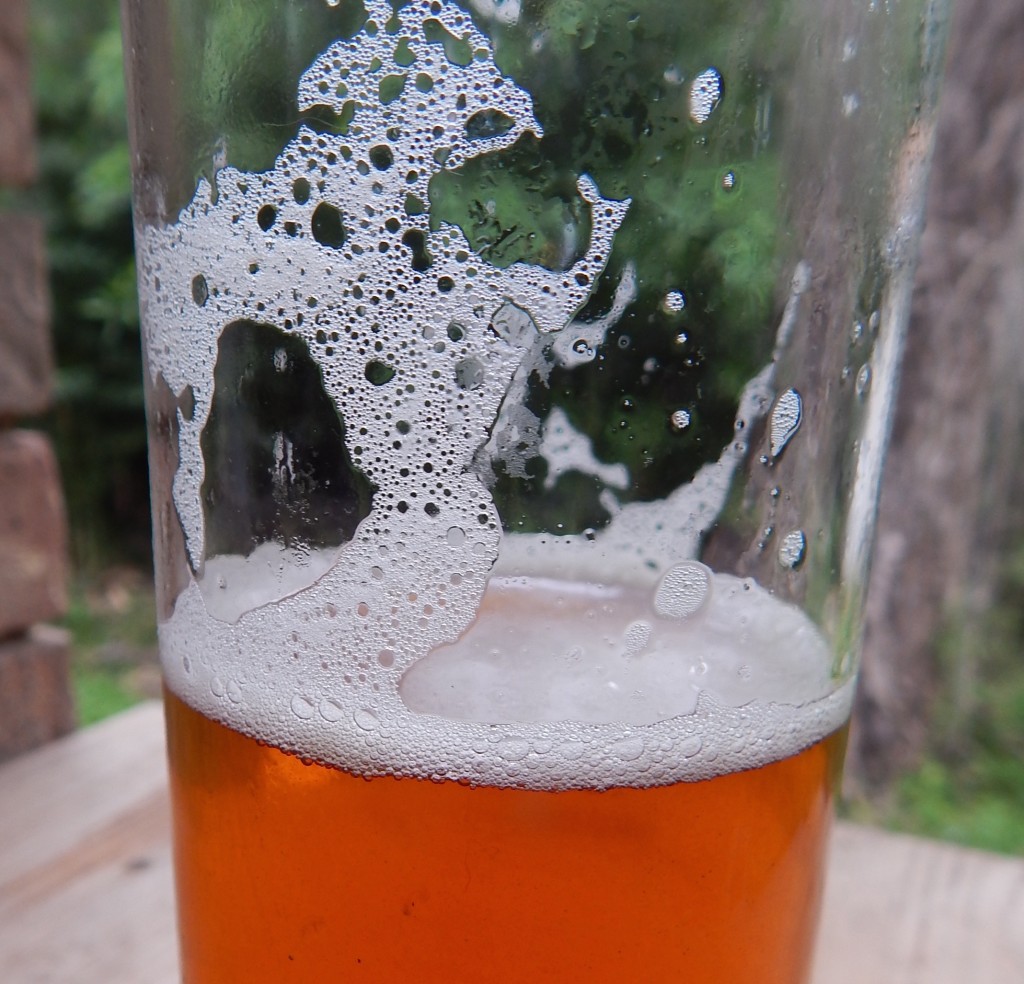 Now that we have an idea about what foam is and how it forms in general, let’s look at some of the specifics of beer foam. A great place to start would be to analyze beer foam to see what it is composed of, and this is something brewing scientists did long ago. They skimmed beer foam, collapsed all the bubbles until it was a liquid again, and determined and ran tests to determine its composition.
Now that we have an idea about what foam is and how it forms in general, let’s look at some of the specifics of beer foam. A great place to start would be to analyze beer foam to see what it is composed of, and this is something brewing scientists did long ago. They skimmed beer foam, collapsed all the bubbles until it was a liquid again, and determined and ran tests to determine its composition.
What is Beer Foam?
As it turns out, most of the dry weight of beer foam is carbohydrates. This makes a certain amount of sense when you think about what is in beer. In a 5% ABV beer, over 90% of it is water, 5% is ethanol, and the next most abundant component is carbohydrates. We also know that carbohydrates can form foam. When you pour a soda pop into a glass, it foams vigorously . . . at first. But, we also know that the foam collapses almost immediately. Beer foam, on the other hand, stays (relatively) stable after the beverage is poured. The inference is that something else is present, something that stabilizes the foam in beer, but not in soda pop.
What Stabilizes Beer Foam?
After water, ethanol, and carbohydrates, the next most abundant set of compounds in beer is protein. And, brewing scientists have determined that proteins stabilize beer foam. More specifically, the stability of beer foam is enhanced in the presence of large proteins. (One study cited proteins over 5,000 MW as being most effective in enhancing foam, and another cited proteins over 12,000 MW.)
Most proteins do no make it through the brewing process and into the final beer, however. Scientists found that the proteins LTP1 (lipid transfer protein 1) and protein Z may be the most important proteins in terms of foam creation (LTP1) and foam stabilization (protein Z). Both these proteins come from barley and survive the brewing process (with minor modifications) to exist in finished beer and be enriched in beer foam. Other large proteins may also play a role. Scientists think that these large proteins have both hydrophobic and hydrophilic regions, making them surfactants. In addition, van der Waals forces between neighboring proteins on a bubble’s surface contribute to the surface tension on the coating of the bubble. These two actions together make these proteins “foam positive,” or, elements that contribute to foam formation and stability.
Iso-alpha acids are also enriched in foam and play a role in foam stability. In lightly bitter beers, the concentration of iso alpha acids in foam is about four times that of the concentration in beer. The iso alpha acids isohumulone and isoadhumulone are more enriched in foam than isocohumulone. These bittering compounds contribute to the longevty of foam. Iso alpha acids that have been reduced — such as tetrahydroiso alpha acids (the chemically altered alpha acids used by some brewers who package their beer in clear bottles) — have an even greater positive impact on foam stability.
 In beers that have their foam stabilized by iso alpha acids, metal ions can further increase the foam stability. Specifically, the presence of Mn2+, Al3+, and Ni2+ is thought to cross-link iso alpha acids on the surface of a bubble, strengthening the surface tension.
In beers that have their foam stabilized by iso alpha acids, metal ions can further increase the foam stability. Specifically, the presence of Mn2+, Al3+, and Ni2+ is thought to cross-link iso alpha acids on the surface of a bubble, strengthening the surface tension.
Other compounds in beer have been cited as having foam positive qualities. These include melanoidins and beta glucan (although not all studies support this). It is also know that beers with lower pH values have more stable foam.
So, beer foam is mostly carbohydrates by weight, but proteins are the major contributors to creating and stabilizing beer foam. The two main proteins identified so far as important to foam are LTP1 and protein Z. Secondarily, iso alpha acids — and especially isohumulone and isoadhumulone — contribute to foam stability. Their effect is increased in the presence of some metal ions. Foam doesn’t last forever, however. There are also compounds that contribute to the collapse of beer foam and I will discuss those “foam negative” elements in the next installment of this article.
—
Related Articles

“One study cited proteins over 5,000 MW as being most effective in enhancing foam, and another cited proteins over 12,000 MW.” where is this study cited? I would like to read into it more.
With no references it’s pretty hard to read the actual information. Thanks for the attempt, but it’s pretty useless without the proper context.